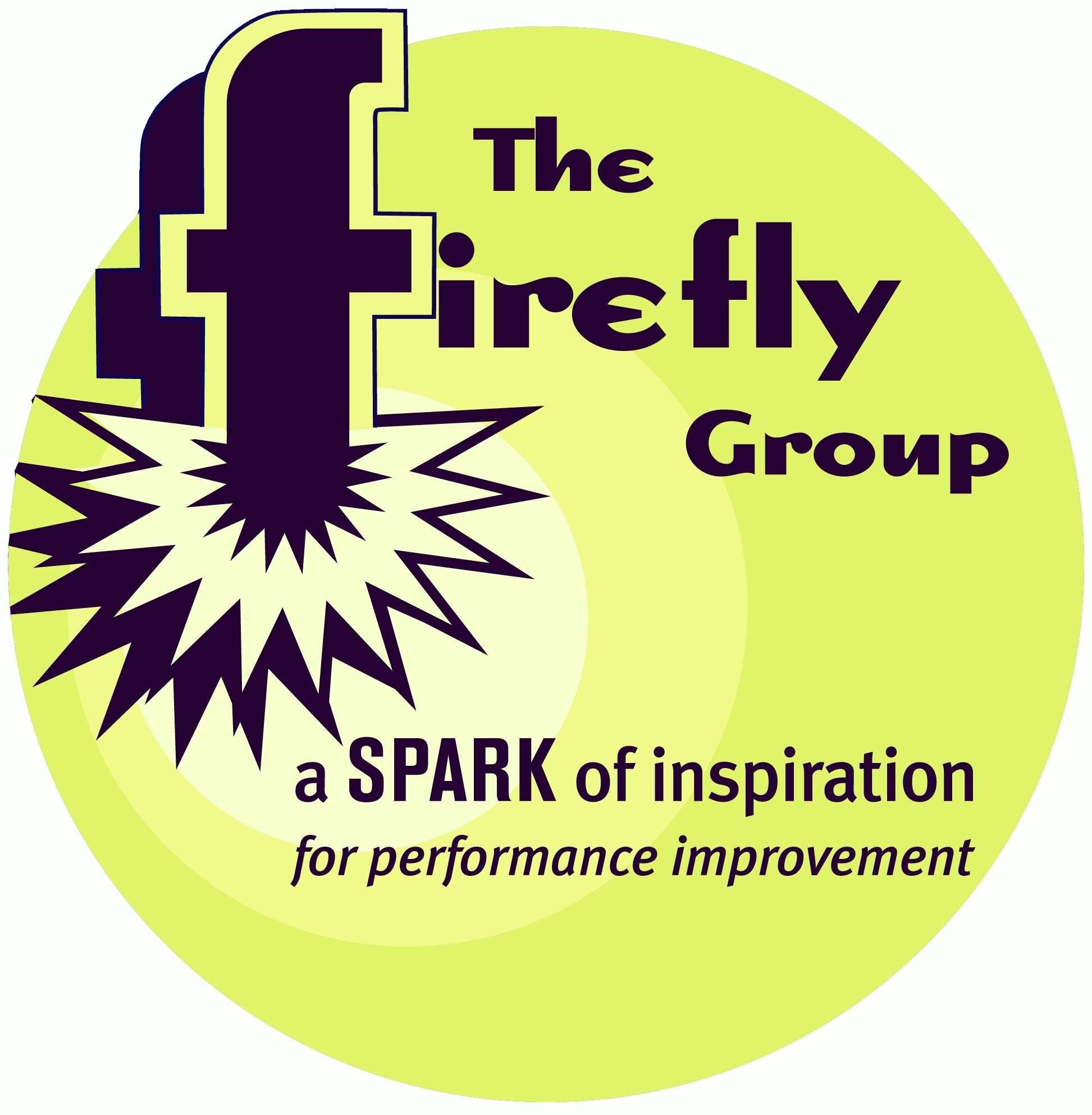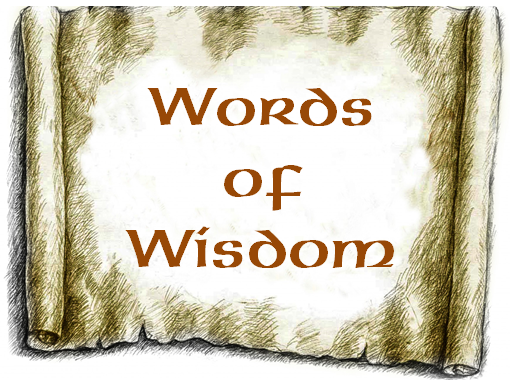

What's New

Words of Wisdom
52
cards and 15 activities to spark conversations and make sense of learning.
Learn more HERE.
What We Do
The Firefly Group helps people make sense of what they learn and experience.
Whether facilitating a group for better decision-making, keynoting a conference, leading a training, or writing an instructional design, we use novel methods that engage, spark creativity, and produce memorable results.
 If
this sounds like a good direction for your organization, let's talk about
how we might collaborate! Please give me a call (802.257.7247) or send an
. - Brian
If
this sounds like a good direction for your organization, let's talk about
how we might collaborate! Please give me a call (802.257.7247) or send an
. - Brian
 Your ETR (Estimated Time to Read): 10 minutes Your ETII (Estimated Time to Implement Ideas): 5 weeks |
March 2016
|
Say
It Quick |
Discoveries bits of serendipity to inspire and motivate |
Ideas fuel for your own continuous learning |
Activities tips and tricks you can try today |
| A Fix for Functional Fixedness | Innovate Now |
Don't miss these learning opportunities…
Catch my upcoming webinar sponsored by the Bay Area chapter of ISPI on March 30 at 6:00 PM Pacific Time. The topic is "Stealth Engagement: The Hidden Motivators that Drive Performance." For more information: http://www.ispibay.org/Meet me at the New England ATD Conference, April 1 in Chelmsford, MA where I will be leading a session called "Playing with Perception." It's an examination of the secret influence your subconscious has on decisions and actions. For more information: http://www.atdnewengland.com/
Most of us would be more creative if only we could see beyond the ordinary. But how can you identify what you cannot see? Surprisingly, the innovative solution you seek likely involves more possibilities than you would typically imagine. Learn how to find those possibilities beginning with this story in just 99 words.
The Slow Learner
One sweltering summer day, I sought relief on the screened porch. An enormous housefly was bouncing against the screen trying to get out. Feeling charitable, I waited until it got to the door then swung it open. But the fly kept bashing into the screen door anyway. I pushed the door open further. Still the fly ping-ponged against the screen never knowing a right angle turn would set it free. Finally I let the door swing shut.When we don't see progress, what makes us think doing more of the same thing will set us free?
 A
Fix for Functional Fixedness
A
Fix for Functional Fixedness
The tragedy of the poor fly in the 99-Word Story is that it doesn't know there
are other options besides forcing itself against the screen. Having taught
itself one way of dealing with entrapment, it is unable to even try something
novel.
Unfortunately, we too can become entrapped by our previous learning. This is especially true when we try to innovate.
This is the basis of the work by Tony McCaffrey, a professor of Cognitive Psychology at the University of Massachusetts Amherst. Knowing that most innovations are a variation of previous ideas, McCaffrey realized that creative solutions take advantage of a previously overlooked quality of an object that is then used in a different way.
Why are these qualities with their potential solutions overlooked? Functional fixedness is the culprit (first described by Karl Duncker in the 1930s). When we see an object, we are instantly reminded of - and limited by - its most common uses. This has practical value in that you don't have to study each item in a toolbox to figure out how to use a wrench or hammer, for example. But functional fixedness also circumscribes how we look at objects. It discourages us from inventing other variations or uses for them.
McCaffrey offers a solution with his Obscure Features Hypothesis for innovation. The concept is that our mind constantly generates meaning based on the features of an object. When we notice more features, we naturally identify more uses.
The problem is in breaking our functional fixedness. McCaffrey's research has shown that "people overlook about two-thirds of the types of features that an object possesses. Not two-thirds of the features, but two-thirds of the types of features. They ignore whole categories that are not relevant to the object's common use (e.g., motion, symmetry, texture, and many others)."
To break through functional fixedness, McCaffrey has developed the Generic Parts Technique. Take an item and break it into its parts. Then ask: Can it be broken down further? And, does your description imply a use? If so, describe it more generically. Calling something a hammer implies hitting nails. Calling the same object "an asymmetrical piece of heavy steel and a wooden cylinder" opens up possibilities for many other uses.
To share an example of the effectiveness of the Generic Parts Technique, McCaffrey used it to develop ten new types of candles based solely on obscure features not typically considered. Nine of these ten designs were confirmed to never have been tried in the 5000-year history of candle making. And McCaffrey invented these ideas in about two hours!
You can learn more about Tony McCaffrey's work at the links below.
Resources:
Tony McCaffrey, "Why We Can't See What's Right in Front of Us," Harvard Business Review (May 10, 2012)
Tony McCaffrey and Lee Spector, "Behind Every Innovative Solution Lies an Obscure Feature," Knowledge Management & E-Learning: An International Journal, Vol.4, No.2 (2012)
Anthony J McCaffrey, "The Obscure Features Hypothesis for innovation: One key to improving performance in insight problems" (January 1, 2012). Doctoral Dissertations Available from Proquest. Paper AAI3518388.
Analogy Finder, McCaffrey's tool used to find ideas in the US Patent Office data base that might offer an obscure angle on solving your problem. Explained by McCaffrey on You Tube.
Portmanteau
"Innovative solutions … are generally built upon an obscure feature of your problem."
-- Tony McCaffrey
A portmanteau is a word that combines both the sounds and the meaning of two different words to create a new meaning.
Common and uncommon English portmanteaus include smog, a combination of smoke and fog, motel, a mashup of motor and hotel, dramedy (drama plus comedy). Infomercial (information plus commercial), and entertrainment (entertainment plus training).
The word portmanteau itself is derived from several combined meanings. In English we have portmanteau luggage, a travel case with two compartments. And "portmanteau" is derived from the French words porter (to carry) and manteaux (coat).
Creating and using portmanteaus is a lot like McCaffrey's concept of Obscure Features. When the elements of two unrelated concepts overlap, a new meaning results.
This is similar to the techniques that foster insights as described by Gary Klein in his book, Seeing What Others Don't (read my review of this book in the August 2015 Firefly News Flash). Klein talks about three major paths to innovation.
Both the Contradiction and the Connection paths rely upon the concatenation of ideas. Noticing contradictions is one way to identify the obscure features that McCaffrey says are so important for innovation. Using connections involves the very portmanteau-like combinations that McCaffrey is striving toward.
McCaffrey has developed a variation on idea generation which, in keeping with our theme of the portmanteau, he calls "brainswarming," a combination of brainstorming and free-wheeling movement. Brainswarming participants write a problem at the top of a whiteboard and list various resources across the bottom. People then use the Generic Parts Technique to expand both the top problem and bottom resource list toward the center. People work independently and silently adding concepts. As words are filled in, novel associations are revealed. (https://hbr.org/video/3373616535001/brainswarming-because-brainstorming-doesnt-work)
McCaffrey has adapted this process for inventors. His Analogy Finder application combs the database of the U.S. Patent Office to uncover the uncommon ways similar words are used to describe various ideas across disciplines. In a matter of moments, it's possible to discover an obscure feature from another person's work that has relevance for your own.
Innovate Now
Of course, you don't have to be looking for a new idea to patent in order
to take advantage of what McCaffrey has learned about innovation. You might
be trying to solve a problem, write a strategic plan, design a project, build
a team, or train about a topic. In any case, I believe McCaffrey's ideas about
identifying obscure features and using analogies can help you innovate.
Here's how I might adapt his techniques to improve team motivation.
Step One: Define the Problem
Suppose I want to increase engagement in my team. I know that intrinsic motivators like autonomy, belonging, competence, and a sense of purpose or destiny are especially motivating for individuals and teams. I decide to focus on autonomy. So my problem statement isHow can I increase autonomy in my team
while keeping everyone focused on the same goals?
Step Two: Grab a Thesaurus
The words "increase autonomy," a verb and a noun, are key because they express the basic change I want to see. I then look through my thesaurus to discover as many related words as I can.
Here's what I find for "increase:"
These are the words I find for "autonomy:"
Notice that in some cases I've created additional branches and connections by exploring some words in more detail.
Step Three: Make a Metaphor
A metaphor will help me identify and make obscure connections so I choose an object, anything interesting that I find without thinking about it too much. I pick up the headphones from my desk and make a list of its features and qualities:
Step Four: Make Connections
Look for linkages between the problem goal and the metaphor. If an element of the metaphor was an analogy for an aspect of the problem, what might that mean? What significance would it have? What would you do differently?In my example, if autonomy on our team is like a personal headphone set, I can see that, like a computer, I can deliver information from a centralized source to escalate team effectiveness. There will be local use meaning people will exercise their own sovereignty and as a result evolve slowly. Whatever I do has to be the right fit. When it's comfortable, people will adopt the ideas and grow. I need to remember that my team has a measure of control. Like a volume button, they can intensify their enthusiasm for a project. When they can decide the content, we'll make progress. But if I surge too hard or try to proliferate our efforts too fast, they may put me on mute.
Step Five: Strategize, Implement, Evaluate
Decide upon your actions. What will you do, when, and how will you know you've been successful?In my situation, the analogies and associations make it clear that there are both risks and benefits to increasing autonomy within my team. It looks like I should take it slowly at first so that I can balance my centralized input with the team's ability to control the intensity (volume) of that input. Hopefully this will be more comfortable for everyone.
I decide to begin by sharing my thinking process, including my analogy map, with the team. We contrast the benefits of increasing the group's autonomy with the challenges of making progress toward our goals. We identify a content area where the team can decide how to make progress toward our goal. We agree to evaluate our autonomy and progress in three weeks.
What's interesting is that now the vocabulary of the metaphor has become a quick way for the team to communicate. We often talk about whether the level of autonomy is a comfortable fit for a particular individual. We question whether the volume of a situation is too intense. And once in a while, someone will admit that they've been on mute and need a break or additional support.
Undoubtedly, you would invent different associations even if you used the same problem statement and metaphor. But that's the point: increase people and multiply connections.
This activity also demonstrates that, by examining the generic parts of both the problem and the analogy, you can turn anything into a meaningful metaphor that will enhance insight and lead to innovative solutions.
If you experiment with this process, please !
|
Whether you need a keynote speaker, or help with strategic planning, performance improvement, or training facilitators and trainers in your organization, I look forward to your call (802.257.7247) or . -- Brian |
Read previous
issues. Click Library!
To add or delete your name to our mailing list, email
with a short note in the subject line.
I want this newsletter to be practical, succinct, and thoughtful. If you have suggestions about how I can meet these criteria, please let me know! Send me an with your thoughts and ideas.
Home
| Services | Products
| Mission | Ideas
| The Group | The
Buzz
(c)
2016 The Firefly Group